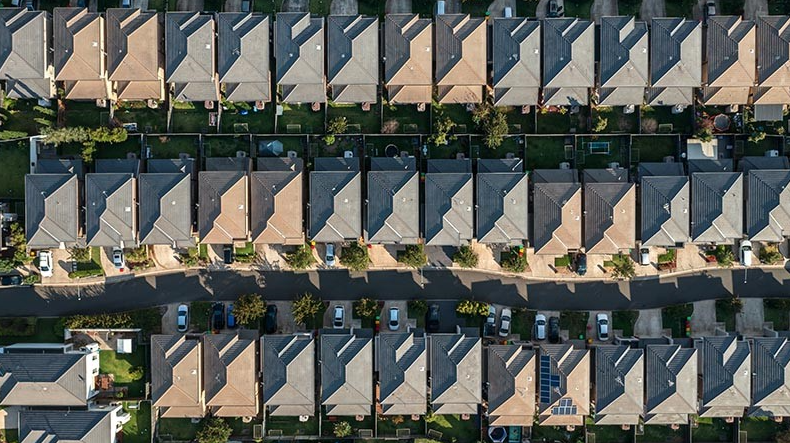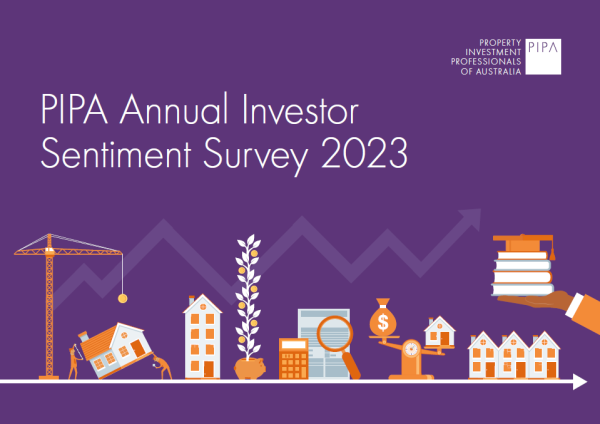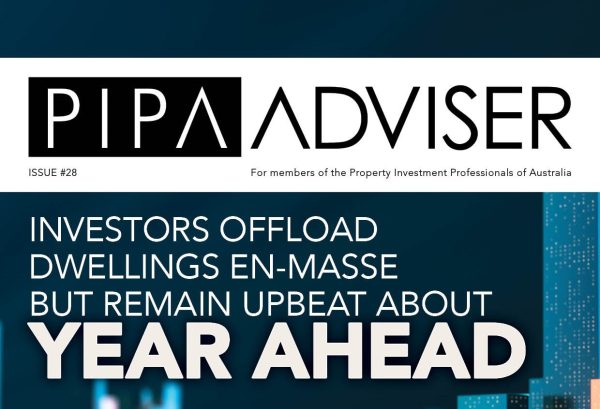Property market update: Brisbane, May 2020
Jun 2020Karen Millers
Categories
Location ReportsMedia releasesNational market updatesPersonal advisersPIPA AdviserPIPA Annual Investor Sentiment SurveysPIPA Member ProfilesPIPA video updatesPIPA webinarsPodcastsProperty advisersProperty newsLatest Articles
Which property cycle are we in?
Rent rises ease but crisis’ link to population density found to be tenuous
Jordan van den Berg: The ‘Robin Hood’ TikToker taking on Australian landlords
Victorian property investors face yet another new property tax as council tests levy
The COVID-19 pandemic has caused fear and panic among investors in the property market as it halted economic growth across the world.
However, Property Investment Professionals of Australia (PIPA) chairman Peter Koulizos believes that the pain in the property market will be short-lived, with property prices expected to bounce back post-pandemic.
Research conducted by PIPA found that five years after each of the recessions or economic downturns over the past 50 years – from 1973 to the GFC – capital city house prices saw significant increases.
While some areas outperform others due to different economic reasons such as employment, capital cities generally continued to grow.
For instance, five years after the recession of 1973 to 1975, Sydney median house prices had increased 100.7 per cent, followed by Perth and Brisbane, as the economy grew after the downturn.
Consequently, after the economic downturn of 1982 and 1983, Melbourne led the property pack with median house price growth of 67.7 per cent, and many other capital cities were not far behind with growth in the 50 per cent to 64 per cent range.
“When it came to the ‘recession we had to have’, Darwin produced median house price growth of 47.3 per cent in the following five years, with Perth the second-place getter again. Then, [following] the GFC, as we all know, Sydney was again the [frontrunner] within five years as the start of its property boom started to take shape,” according to Mr Koulizos.
Over the three most recent economic downturns, there were periods of annual house price falls in many capital cities, but the price reductions were never sustained nor prolonged, he added.
“An interesting point to that is that in 2011, every capital city recorded a fall in its house price index, which was simply when the GFC stimulus money ran out,” he said.
“This could well become a statistical reality this time around, too, but it’s important to recognise that within either one year or two years of that period, the house price index was showing solid growth once more.”
Ultimately, the moral of the story is “Don’t panic”, the property expert said.
“Property has shown its resilience through economic shocks before, and we have no reason to expect it won’t do so again,” he said.
On a similar note, Propertyology’s head of research Simon Pressley urged investors to take comfort in knowing that “the current economic volatility has a cause with a defined solution and a relatively defined time frame.”
After all, Australia is one of the very few countries that has a balanced budget, and the fact that its government debt is the lowest in the world means that the country is in a strong position to cushion the impact of the COVID-19 outbreak.
“When we get out of our cocoons in a few [months’] time, there’s going to be an enormous release of pent-up demand,” Mr Pressley said.
“All the things we haven’t been able to do, we will be doing that stuff. That will stimulate the economy quickly. Then we have the stimulus packages on top of that – we have credit supply with the gates being open; we have all-time record-low interest rates, and we have property yields of 5 per cent.”
Property values
SQM Research’s monthly report showed the combined capital asking prices increased by 0.7 per cent for houses and 0.1 per cent for units over the month to 5 May 2020.
Median unit asking prices are now at $574,900, while median houses asking prices are now at $994,300.
Compared to a year ago, the capital city’s asking prices posted increases of 9.4 per cent for houses and 3.0 per cent increase for units.
The strongest monthly growth was seen in Sydney house prices with a 1.1 per cent increase, as well as in Melbourne’s unit market, which saw a 1.0 per cent increase.
Over the month, some capital cities recorded marginal asking price increases, with the exception of Perth, Canberra and Hobart, which all recorded declines for both houses and units.
Melbourne, Adelaide and Darwin were the only capital cities to record increases in both house and unit prices.
PRDnationwide’s latest research showed that, despite a lower cash rate and more lenient lending practices, there remains a large discrepancy when it comes to average loans in each state and median house prices in each capital city.
Over the quarter, Brisbane’s median price was recorded at $542,000 while its average state loan was at $412,297.
Meanwhile, Sydney had a median house price of $1,142,212 and average state loan of $592,338 and Melbourne had a median house price of $859,500 and an average state loan of $493,471.
Currently, finding an affordable property option in capital cities continues to be difficult, especially for first home buyers, according to the PRDnationwide report.
“Despite a lower cash rate and more lenient lending practices, there is still a large discrepancy between the average state loan and median house price in capital cities, like 51.9 per cent in Sydney and 76.1 per cent in Brisbane.”
“Further attributing to the challenge are capital cities, which have experienced solid growth in their median house prices, with the December quarter 2019 reporting a weighted average Australian median house price of $775,918 – representing annual growth of 5.8 per cent.
“The Australian median family weekly income grew by 2.5 per cent over the same period of time, resulting in the home affordability index declining by -4.3 per cent. Although housing affordability in major capital markets continues to be challenging, regional areas should not be dismissed,” the report highlighted.
Moving forward, ANZ Research is forecasting a peak-to-trough decline in property prices of 10 per cent, led by sharp declines in Hobart (11.2 per cent), Melbourne (8.5 per cent) and Sydney (8.1 per cent) over the course of 2020 and 2021.
Growth trends are expected to begin turning positive in the back end of 2021.
Supply and demand
While property values have fallen, REINSW president Leanne Pilkington points to the positive clearance rates as a sign the property market has not fallen as far as predicted.
According to CoreLogic’s forward indicators, newly advertised properties were up 4 per cent for the week ending 24 May, giving an indication sellers were re-entering the market.
Preliminary auction clearance rate, meanwhile, was recorded at 70.9 per cent during the same period.
Across capital cities, clearance rates were highest in Sydney (77.9 per cent), followed by Canberra (73.3 per cent), Melbourne (72 per cent), Brisbane (45.9 per cent) and Adelaide (38.5 per cent). In volume terms, 613 homes were taken to auction, up week-on-week from 400.
“It is interesting that the analysts who are now saying the market needs a ventilator are the same ones that were previously saying we were in a boom when the market had 80 per cent clearance rates. So, the way I do the maths, the distance between apparent boom and bust is 2.1 per cent,” Ms Pilkington said.
CoreLogic expects volumes to pick up over the coming weeks in response to the lifting of the on-site auction bans.
As open-home restrictions begin to lift, a Brisbane-based Coronis Agency has reported more than 80 potential buyers attending the first scheduled open home of an Archerfield property – a three-bedroom, two-bathroom property which received more than 56 phone and email enquiries within 48 hours.
Director Anthony Hunt said that the general feedback he received from most parties is that “they want to buy something right now, despite everything going on with COVID-19”.
“Many of them are first home buyers with pre-approval who are looking to get their foot on the property ladder and aren’t fazed about going out in public to attend open homes,” he said.
The director believes that what they’re more concerned about is the lack of properties to choose from and how quickly properties are selling at the moment, so much so that buyers are willing to look outside of their desired suburb to purchase the right property.
His message to those who are considering holding off on selling: Don’t wait.
“In the past week, the Coronis sales team has received more than 1,000 buyer enquiries, and from that, 550-plus groups attended an open home on the weekend, so there is no doubt about it – buyers have a strong appetite to purchase now, they just need more options to choose from,” according to Mr Hunt.
Rental market
Real Estate Institute of Queensland (REIQ) found that despite the perceived effects of the COVID-19 outbreak, Queensland has reported a relatively stable vacancy rate of 2.44 per cent for the last quarter.
Some of the state’s tourism property markets, however, saw varying results following the mandatory restrictions which resulted from the health crisis.
The Sunshine State’s capital city Brisbane, saw rental vacancy rates drop by almost 1 per cent “on the back of a better-than-expected 0.5 per cent bump in economic growth in the December quarter and 2.2 per cent over the past year,” REIQ research noted.
Brisbane’s inner-city districts experienced the largest fall in vacancies by 1.2 per cent.
According to REIQ CEO Antonia Mercorella: “Across Brisbane, vacancy rates have remained tight, which is a great reflection of a healthy market albeit some more pronounced fluctuations within the apartment sector will inevitably be expected in future data.”
“Ultimately, Brisbane continues to prove that it’s remained fairly buoyant throughout the current pandemic and continues to be the most affordable capital city in Australia,” she said.
The Gold Coast, meanwhile, saw an end-of-summer sharp spike result in a 1.2 per cent rise to 3 per cent, while areas slightly north of Brisbane have remained generally stable.
For example, Caboolture saw a drop in vacancies from -0.6 per cent to 0.8 per cent, while Redcliffe saw a marginal rise of 0.1 per cent to level out still within a tight vacancy range at 2 per cent. Further north, the Sunshine Coast hasn’t offered up any side effects from COVID-19 as of yet, with a 0.2 per cent drop in vacancy rates across the region to 1.4 per cent.
Areas back along the coastline, on the other hand, saw some “unmistakeable movement upward”, particularly in Noosa (+1.3 per cent to 3.6 per cent) and Fraser Coast (+1.4 per cent to 3.1 per cent), which includes Hervey Bay (+2.4 per cent to 4.3 per cent).
“Drive a few hours north and more stable yet tight vacancy rates become the norm once more from Bundaberg (+0.9 per cent to 2.4 per cent) through to Rockhampton (-0.3 per cent to 1.3 per cent),” REIQ noted.
“However, the outlier here is Gladstone. With mining and infrastructure projects on the go, demand for trades has boomed – with vacancy results reflecting rental demand by a staggering 2.5 per cent to a record low of 1.6 per cent for the region,” REIQ noted.
Mackay stands as the only area across Queensland that’s remained unchanged over the quarter (2.5 per cent).
Commenting on the results, Ms Mercorella said: “Any further surges in vacant properties across Queensland’s tourism regions are likely to be addressed by future tourism-focused initiatives to boost domestic holidaymakers.”
“It’s an optimistic start to the year. The next quarter will reveal more about the true impact of COVID-19 on the Queensland rental market,” she said.
2020 outlook
Richard Sheppard of Insynergy Property Wealth Advisory said that property prices are unlikely to fall much further in most major locations.
After all, good property markets have proven themselves resilient as they continued to rise over the decades, even after it bore witness to different economic shocks, “including a different coronavirus, SARS, in 2003”.
This time around, some locations will fare better than others, including Brisbane, Canberra and Adelaide sub-markets which have strong fundamentals for the medium to long-term, according to Mr Sheppard.
Yields in these markets are 4.5 per cent to 6 per cent-plus for a “well-selected property”.
With investor interest rates as low as 2.84 per cent, investors can have positive cash flow of about 1 to 3 per cent net of costs, he added.
Further, some vendors are offering six to 12-month rental guarantees for added security and peace of mind.
“Property values would need to go backwards more than this for you to lose money. Of course, there is a risk of higher vacancy with job losses. However, the above markets have already had substantially reducing vacancy in the years leading up to now,” Mr Sheppard highlighted.
The easing of COVID-19 restrictions, coupled with optimism surrounding the daily new case figures, ultimately “offered a glimmer of light at the end of this tunnel”, according to him.
To further assist the recovery of the real estate market, property professionals urge the federal government to provide a stimulus package for the building industry, which has been lagging behind as a consequence of the “new normal”.
According to KDL Property Group managing director Kent Leicester, a stimulus package from the federal government to support Australia’s building industry will keep a pipeline of residential housing projects on track and protect more than a million jobs.
The proposed multibillion-dollar scheme could ultimately include the government constructing residential housing to help the building the industry through the COVID-19 crisis.
“The construction industry produces almost 10 per cent of Australia’s gross domestic product and is the third-largest employing industry behind healthcare and retail. There is an opportunity here to support a sector which generates more than a million jobs, many of them very small businesses or sole traders,” he highlighted.
Mr Leicester added that the government should also be looking to counter an expected fall in immigration with a focus on attracting skilled migrants.
“Australia to this point has not been hit as hard as other countries such as the United States and Britain by the COVID-19 pandemic, and to many people overseas it might seem like one of the most desirable places to live in the world,” he said.
Hotspots
Self-managed super fund (SMSF) investors rattled by the financial market turmoil caused by the coronavirus (COVID-19) pandemic are turning to new residential real estate for capital growth, according to Mr Leicester.
KDL Property Group has experienced a similar pattern of SMSF investors looking to invest in new residential homes during the global financial crisis (GFC), which highlights investors’ desire to stabilise their funds by putting some of their money into new residential property.
“The attraction of new homes on freehold titles is the potential for higher cash flow compared to apartments and townhouses, as well as no body corporate levies,” Mr Leicester said.
SMSF investors are now looking to invest in new homes in growth areas, including two residential land estates in Logan, south of Brisbane, which is currently considered a hotspot for good capital growth.
KDL’s Montana Logan Reserve features 93 residential home sites with an array of entertainment, shopping and recreation close by. Nevada Park Ridge features 80 blocks close to unspoilt bushland.
“Lower yields are currently on offer for investors in Sydney and Melbourne property compared to residential real estate in South East Queensland,” Mr Leicester noted.
Despite the severe economic impact of the COVID-19 pandemic, the property professional remains positive about the SEQ property market while interest rates remain at record lows.
“It is still an excellent environment to enable investment in the recovery phase and property will be a safe haven with the share market experiencing so much volatility,” he concluded.
Bianca Dabu, Smart Property Investment, 10 June 2020
https://www.smartpropertyinvestment.com.au/research/21220-property-market-update-brisbane-may-2020




